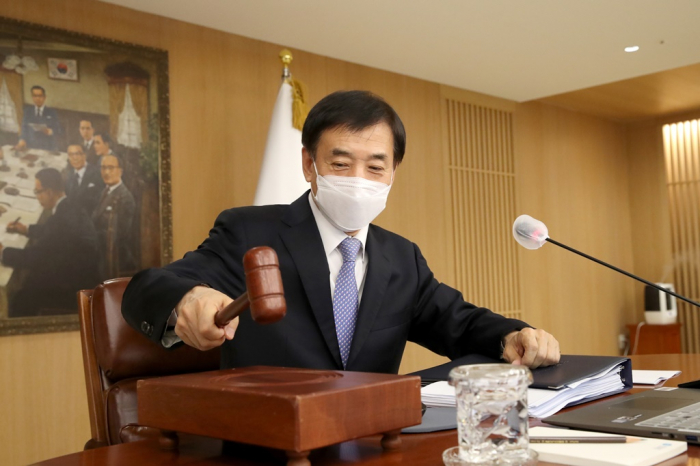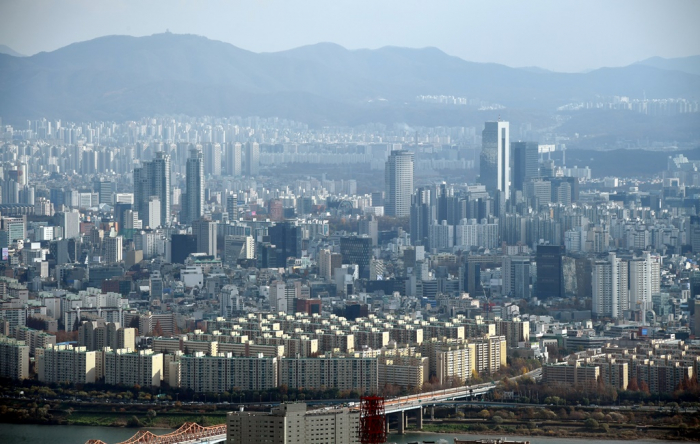Central banking
BOK restores interest rates to pre-pandemic level
Delivers first back-to-back interest rate hikes since 2007; property market to cool down amid further tightening signal
By Jan 14, 2022 (Gmt+09:00)
3
Min read
Most Read

South KoreaŌĆÖs central bank on Friday raised interest rates back to a pre-pandemic level, signaling further hikes to curb rising inflationary pressure and household debt in AsiaŌĆÖs fourth-largest economy.
The Bank of Korea increased the base interest rate by 25 basis points to 1.25%, as widely expected, the highest since March 2020 when the central bank started lowering borrowing costs to help the economy deal with the COVID-19. In May 2020, the authority slashed the rate to a record low of 0.5%.
BOK Governor Lee Ju-yeol reiterated his hawkish stance after the hike, saying the central bank needs to raise interest rates further.
ŌĆ£The current policy rate remains accommodative, given economic conditions such as growth and inflation. It is necessary to further adjust interest rates in consideration of economic situations,ŌĆØ Lee said at a press conference.
ŌĆ£Raising the rate to 1.5% cannot be viewed as tight (monetary policy).ŌĆØ
FIRST BACK-TO-BACK INCREASE IN 14 YEARS
The hike, the first back-to-back increase since 2007, came amid concerns over surging inflation. Global monetary policymakers took steps to end emergency stimulus in order to contain rapid rises in consumer prices.
The BOK started bumping up the policy rate in August last year, becoming the first central bank in Asia to end its ultra-easy monetary policy stance that supported economic growth during the pandemic era.
ŌĆ£Consumer inflationary pressure is higher and broader than expected,ŌĆØ Lee said, predicting inflation this year to top 2.5% in 2021, exceeding the central bankŌĆÖs target of 2%.
Lee ruled out possible stagflation ŌĆō rising inflation with slowing growth, saying the economy is forecast to grow 3% this year after expanding 4% in 2021, above a potential growth of 2% for a second straight year.
ŌĆ£It is different from the general trend of stagflation, with demand increasing rapidly due to the economic recovery,ŌĆØ Lee said.
FURTHER HIKE FROM Q2
The BOK cannot help raising interest rates further, given the Federal ReserveŌĆÖs hawkish stance, in order to keep interest rate differentials and prevent capital outflows. The US central bank is expected to ramp up borrowing costs in March to stem inflation.
ŌĆ£The FedŌĆÖs monetary policy normalization is accelerating faster than expected,ŌĆØ Lee said.
The BOK is, however, expected to raise interest rates from the second quarter once a new governor takes office since LeeŌĆÖs term is over in March.
Some predicted the base rate to rise to up to 2%.
ŌĆ£The BOK is likely to make four hikes once the Fed accelerates the tightening and the countryŌĆÖs inflation holds around 3-4%,ŌĆØ said Kim So-young, a Seoul National University economics professor, before the interest rate increase on Friday.

TO COOL DOWN PROPERTY MARKET
The hike is expected to cool down South KoreaŌĆÖs property market, analysts said.
ŌĆ£Demand for property purchases could weaken as interest rates rise when the loan limits already declined after financial authorities tightened regulations on household debt,ŌĆØ said Kim Hyo-sun, a real estate researcher at NH Bank.
Growth in prices of housing in Seoul and the surrounding areas has already been slowing down since the fourth quarter of 2021 on a tougher debt service ratio (DSR) and two rate hikes last year.
Seoul apartment prices last month rose 0.25% on average, the lowest in 2021, according to Korea Real Estate Board. Prices of apartments in the surrounding areas grew an average of 0.35% in December last year, less than a half of 0.89% in November.
Record growth in South Korean house prices, backed by household loans, was a key factor driving the BOK to raise interest rates. Household loans, however, slowed down as authorities tightened lending rules.
Household loans with interest rates of lower than 3% annum accounted for 28.7% out of total as of November 2021, sharply down from 72.2% in July, according to the BOK.
ŌĆ£It is an indicator that borrowing costs have snowballed due to two rate hikes last year,ŌĆØ said Ham Young-jin, chief of big data lab of Zigbang, a property app operator. ŌĆ£It will directly affect profitable real estate.ŌĆØ
Write to Ik-Hwan Kim and Hun-Hyoung Ha at lovepen@hankyung.com
Jongwoo Cheon edited this article.
More to Read
-
 Central bankingBank of Korea may hike rates this week to curb inflation, household debt
Central bankingBank of Korea may hike rates this week to curb inflation, household debtJan 13, 2022 (Gmt+09:00)
2 Min read -
 Household loansMortgage loan growth slows to near four-year low in November
Household loansMortgage loan growth slows to near four-year low in NovemberDec 09, 2021 (Gmt+09:00)
2 Min read -
 Central bankingBank of Korea raises interest rates, signals further hikes
Central bankingBank of Korea raises interest rates, signals further hikesNov 25, 2021 (Gmt+09:00)
3 Min read -

-
 Real estateKorean housing prices soar to $5 tn in Moon admin with record growth
Real estateKorean housing prices soar to $5 tn in Moon admin with record growthJul 23, 2021 (Gmt+09:00)
3 Min read
Comment 0
LOG IN




